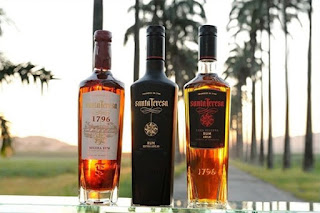Overview:
Venezuela is a country of striking natural beauty, and one of the most highly-urbanised countries in Latin America. It has some of the world's largest proven oil deposits as well as huge quantities of coal, iron ore, bauxite and gold. Yet many Venezuelans live in poverty, often in shanty towns, some of which sprawl over the hillsides around the capital Caracas. Former president Hugo Chavez, who died in 2013, styled himself a champion of the poor during his 14 years in office, pouring billions of dollars of Venezuela's oil wealth into social programs. But the government of his successor, Nicolas Maduro, has had to struggle with plummeting oil prices and an economic and political crisis that has left Venezuela in a state of near collapse. He was re-elected president for a second six-year term in May 2018, in a poll marred by an opposition boycott and claims of vote-rigging.
Source: BBC Country Profile
American Embassy Caracas:
The inspection took place in Caracas, Venezuela, between October 13 and November 3, 2011. We had the same team as in Nassau with the addition of Roman Zawada (DS) who was with me on the Yemen/UAE inspection. Complicating diplomatic relations, Venezuela withdrew the agreement for the last U.S. proposed ambassador. The embassy had been without an ambassador since July 2010 and was short staffed in key areas. A chargé arrived two days after us. Staffing is complicated by a preponderance of first-tour, entry-level officers and inexperienced LE staff, because of attrition caused in part by low local salaries. Both permanent staff and temporary duty support visits have been restricted by Venezuelan visa issuance, which impinges on mission operations. The Management Officer was Cecilia Elizaondo-Herrera. The FMO position had been vacant for over a year and partially filled with short-term intermittent TDY’ers including FMO, Tom Rathman and Nathan St. John from WHA/EX who left the end of September. The HRO, Eric Anderson, was Acting FMO when the OIG arrived. James “Jimmy” Story is the Ambassador for the Venezuela Affairs Unit, located at the United States Embassy in Bogota, Colombia. Ambassador Story was confirmed by the Senate on November 18, 2020.
Findings:
Given the lack of adequate front office oversight,
prolonged staffing shortages in key management positions, weak section
leadership, and lack of a customer service combined to produce significant
deficiencies in support. We had 71
formal and 41 informal recommendations in our final report, and 26 of the
formals were from me. The most I ever
had. Exchange rate anomalies affect many
parts of embassy operations. The official rate was 2.6 to the $U. S. but
the parallel rate was 8.3 and the embassy exchanged dollars at of 4.3 to
$1.00. The embassy urgently needed to clarify
the use of an alternative exchange rate and also denominate locally employed
(LE) staff salaries in U.S dollars.
Likewise with the Cost-of-Living Adjustment for FSOs being at 50%, the
embassy needed to conduct a retail price survey and submit it to the Office of
Allowances.
The embassy Caracas needed to implement uniform service
standards with clear deadlines for service delivery and have the International
Cooperative Administrative Support Services (ICASS) update the TDY policy and
include procedures for charging temporary duty visitors for these services.
There were issues with the housing pool to minimize the use of temporary
quarters for arriving employees and ensure the implementation of comprehensive
plan for short-term lease routine maintenance and repair plan. The bureau of Overseas Buildings Operations, needed
to update and implement its comprehensive space plan for the chancery. The
motor pool section should implement a plan to dispatch motor pool vehicles by
radio, train drivers on a systematic, daily preventive maintenance routine,
using the daily vehicle use form, and spot-check preventive maintenance
regularly. The Management Officer was
also allowing family members to work and essentially volunteering their services. There
were a lot of findings and recommendations in the areas of routine financial management and human
resources too numerous to mention here.
Highlights:
We didn't out very much in Caracas due to security but did manage an excursion out to the Santa Theresa distillery for a tour and tasting. Afterwards we stopped at a Venezuelan steak house for some excellent grilled meat.
The U.S. Embassy in Caracas was built in 1995 as a fortress to withstand terror attacks. The five-story, 100,000 square foot structure sits atop a hill and the American flag is visible throughout much of the capital. The granite-clad building with one level underground was designed and constructed to withstand a terrorist attack.
 |
| Santa Theresa Rum Distillery |
 |
| Tour of the sugar cane fields, grinding and sugar mills, fermentation pots and distillation vats before being aged in oak casks for 4 to 35 years. |
 |
| The products of the Santa Theresa Dum Distillery most notable 1796 |



No comments:
Post a Comment